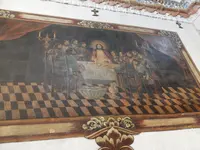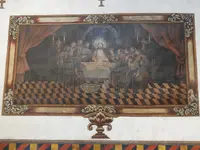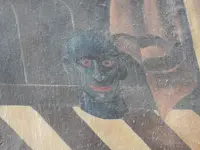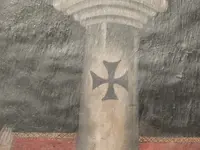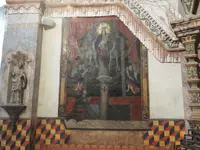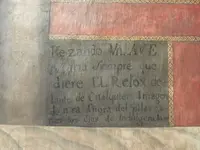Crow
Silver Member
- Joined
- Jan 28, 2005
- Messages
- 4,034
- Reaction score
- 11,236
- Golden Thread
- 0
- Location
- In a tax haven some where
- Detector(s) used
- ONES THAT GO BEEP! :-)
- Primary Interest:
- Other
It became a boys own adventure for fortune and glory. A partnership between a rich backer and a passionate draftsman who was passionate for Egyptology.
While the most elite archeologists of the day had disputed the existence of an alleged boy king there was very few references to this boy king that they was not sure if he was not just a legend. It appears like his father he had been chiseled from history like his father. However one or two cartoughes in stone escaped the destruction. When now know his identity because of it. You can see his cartoughes on his gold throne below.

Tutankhamun (c. 1341 ? c. 1323 BC), commonly referred to as King Tut, was an ancient Egyptian pharaoh who was the last of his royal family to rule during the end of the 18th Dynasty (ruled c. 1332 ? 1323 BC in the conventional chronology) during the New Kingdom of Egyptian history.

His father was the mummy found in the tomb KV55, believed to be the pharaoh Akhenaten. His mother is his father's sister, identified through later 21st century DNA testing as an unknown mummy referred to as "The Younger Lady" who was found in KV35. You can see an a stone image of below Akhenenaten who was classed as a heretic pharaoh from the old religion because of his belief in one god Aten the sun. You can see Aten sun symbol relief below in stone. The image below is of Akhenenaten with a child suspected to be the young Tutankhamun.

The high priests of Egypt and the old religion had been side lined and the power taken away from them. A rare image of king tuts father Akhenenaten below.

Tutankhamun took the throne at eight or nine years of age under the unprecedented viziership of his eventual successor, Ay, to whom he may have been related. He married his half sister Ankhesenamun. During their marriage they lost two daughters, one at 5-6 months of pregnancy and the other shortly after birth at full-term.
His names?Tutankhaten and Tutankhamun?are thought to mean "Living image of Aten" and "Living image of Amun", with Aten replaced by Amun after Akhenaten's death. A small number of Egyptologists, including Battiscombe Gunn, believe the translation may be incorrect and closer to "The-life-of-Aten-is-pleasing" or, as Professor Gerhard Fecht believes, reads as "One-perfect-of-life-is-Aten".
For many years before Carters discovery this Tutankhamun to be more a legend with very little references to this king through out Egypt. More legend than real.
Tutankhamun restored the Ancient Egyptian religion after its dissolution by his father, enriched and endowed the priestly orders of two important cults and began restoring old monuments damaged during the previous Amarna period. He moved his father's remains to the Valley of the Kings as well as moving the capital from Akhetaten to Thebes. Tutankhamun was physically disabled with a deformity of his left foot along with bone necrosis that required the use of a cane, several of which were found in his tomb. He had other health issues including scoliosis and had contracted several strains of malaria.
It was quite possible Tutankhamun was a pawn a puppet ruler manipulated by the high priest of Thebes at the time? However that all came to end when Tutankhamun died and was buried in full splendor and lost history becoming at the time a mere foot note or legend of the boy king in history.
But Carter and Lord Carnarvon had other ideas.....
To be continued.....
Crow
While the most elite archeologists of the day had disputed the existence of an alleged boy king there was very few references to this boy king that they was not sure if he was not just a legend. It appears like his father he had been chiseled from history like his father. However one or two cartoughes in stone escaped the destruction. When now know his identity because of it. You can see his cartoughes on his gold throne below.
Tutankhamun (c. 1341 ? c. 1323 BC), commonly referred to as King Tut, was an ancient Egyptian pharaoh who was the last of his royal family to rule during the end of the 18th Dynasty (ruled c. 1332 ? 1323 BC in the conventional chronology) during the New Kingdom of Egyptian history.
His father was the mummy found in the tomb KV55, believed to be the pharaoh Akhenaten. His mother is his father's sister, identified through later 21st century DNA testing as an unknown mummy referred to as "The Younger Lady" who was found in KV35. You can see an a stone image of below Akhenenaten who was classed as a heretic pharaoh from the old religion because of his belief in one god Aten the sun. You can see Aten sun symbol relief below in stone. The image below is of Akhenenaten with a child suspected to be the young Tutankhamun.
The high priests of Egypt and the old religion had been side lined and the power taken away from them. A rare image of king tuts father Akhenenaten below.
Tutankhamun took the throne at eight or nine years of age under the unprecedented viziership of his eventual successor, Ay, to whom he may have been related. He married his half sister Ankhesenamun. During their marriage they lost two daughters, one at 5-6 months of pregnancy and the other shortly after birth at full-term.
His names?Tutankhaten and Tutankhamun?are thought to mean "Living image of Aten" and "Living image of Amun", with Aten replaced by Amun after Akhenaten's death. A small number of Egyptologists, including Battiscombe Gunn, believe the translation may be incorrect and closer to "The-life-of-Aten-is-pleasing" or, as Professor Gerhard Fecht believes, reads as "One-perfect-of-life-is-Aten".
For many years before Carters discovery this Tutankhamun to be more a legend with very little references to this king through out Egypt. More legend than real.
Tutankhamun restored the Ancient Egyptian religion after its dissolution by his father, enriched and endowed the priestly orders of two important cults and began restoring old monuments damaged during the previous Amarna period. He moved his father's remains to the Valley of the Kings as well as moving the capital from Akhetaten to Thebes. Tutankhamun was physically disabled with a deformity of his left foot along with bone necrosis that required the use of a cane, several of which were found in his tomb. He had other health issues including scoliosis and had contracted several strains of malaria.
It was quite possible Tutankhamun was a pawn a puppet ruler manipulated by the high priest of Thebes at the time? However that all came to end when Tutankhamun died and was buried in full splendor and lost history becoming at the time a mere foot note or legend of the boy king in history.
But Carter and Lord Carnarvon had other ideas.....
To be continued.....
Crow
Attachments
Last edited:
















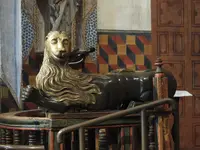








![DSC_2020 [640x480].webp DSC_2020 [640x480].webp](https://www.treasurenet.com/data/attachments/1742/1742786-75bdd97ff856b97fa9175c6315047629.jpg?hash=DGAmRKAy4E)
